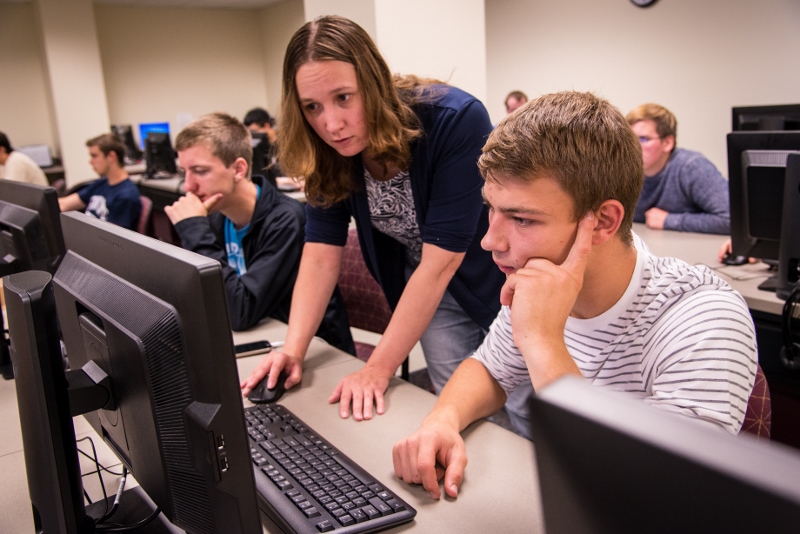The secret to a perfect selfie? Add some math.
The best portraits incorporate something called a Fibonacci Spiral. It spreads like a Nautilus shell, touching each side of a rectangle that is 1.618 times deeper than it is wide. On the Mona Lisa, for example, the spiral begins at her wrist, at the bottom of the image, and then extends over her shoulder, into the background, before crossing the top of her head. Then it tightens, touching her chin, her dimple, and the tip of her nose. That centers the image in a way that makes the eyes seem to follow you.
 Heather Cole, lecturer in digital arts, teaches Fibonacci in her photography and digital art classes at Penn State Behrend. Some of her students carry fancy DSLR cameras. Others use their phones. With both groups, Cole begins with the fundamentals of composition: color, line, shape, value and form.
Heather Cole, lecturer in digital arts, teaches Fibonacci in her photography and digital art classes at Penn State Behrend. Some of her students carry fancy DSLR cameras. Others use their phones. With both groups, Cole begins with the fundamentals of composition: color, line, shape, value and form.
“There are always going to be new platforms, new mediums and new ways of creating art,” she said, “but the building blocks are always the same.”
Digital technology has transformed the way we live, work and learn. For Cole, who once developed prints in photography darkrooms, crinkling her nose at the smell of ammonium thiosulfate, the challenge now is to bridge the old to the new, using computing and other digital tools to build on traditional liberal-arts studies, emphasizing critical thinking and the ability to analyze texts and images.
That effort is reflected in curriculum updates across the college’s School of Humanities and Social Sciences. It has even led to a new major: Digital Media, Arts, and Technology, or DIGIT. The program blends historical and theoretical course work with intensive practical training in digital media systems, including Pro Tools, Sony Sound Forge, Python and Maya animation software.
“We are always looking at how we teach, and the skills we teach with, to see if there are better or more creative ways to engage our students,” said Sharon Dale, professor of art history and chair of the DIGIT and Arts Administration programs. “Most of our students are digital natives. This is the language they speak.”
professor of art history and chair of the DIGIT and Arts Administration programs. “Most of our students are digital natives. This is the language they speak.”
The DIGIT curriculum prepares them to both embrace and look beyond the technology, which does have a shelf life.
“We aren’t just teaching them a particular set of digital skills,” Dale said. “We’re teaching them how to think on a variety of platforms in a variety of different ways.”
DIGIT graduates will be positioned for careers in film, video, gaming, advertising and web design. They also will have a more nuanced appreciation for the arts.
“A lot of our students, because of how much imagery is thrown at them each day, already have a sense of what makes a good photograph,” Cole said. “There are so many images passing in front of them every day. I try to build on that, and to give them the vocabulary to better understand it. That will make them better not only as photographers, but as viewers, too.”